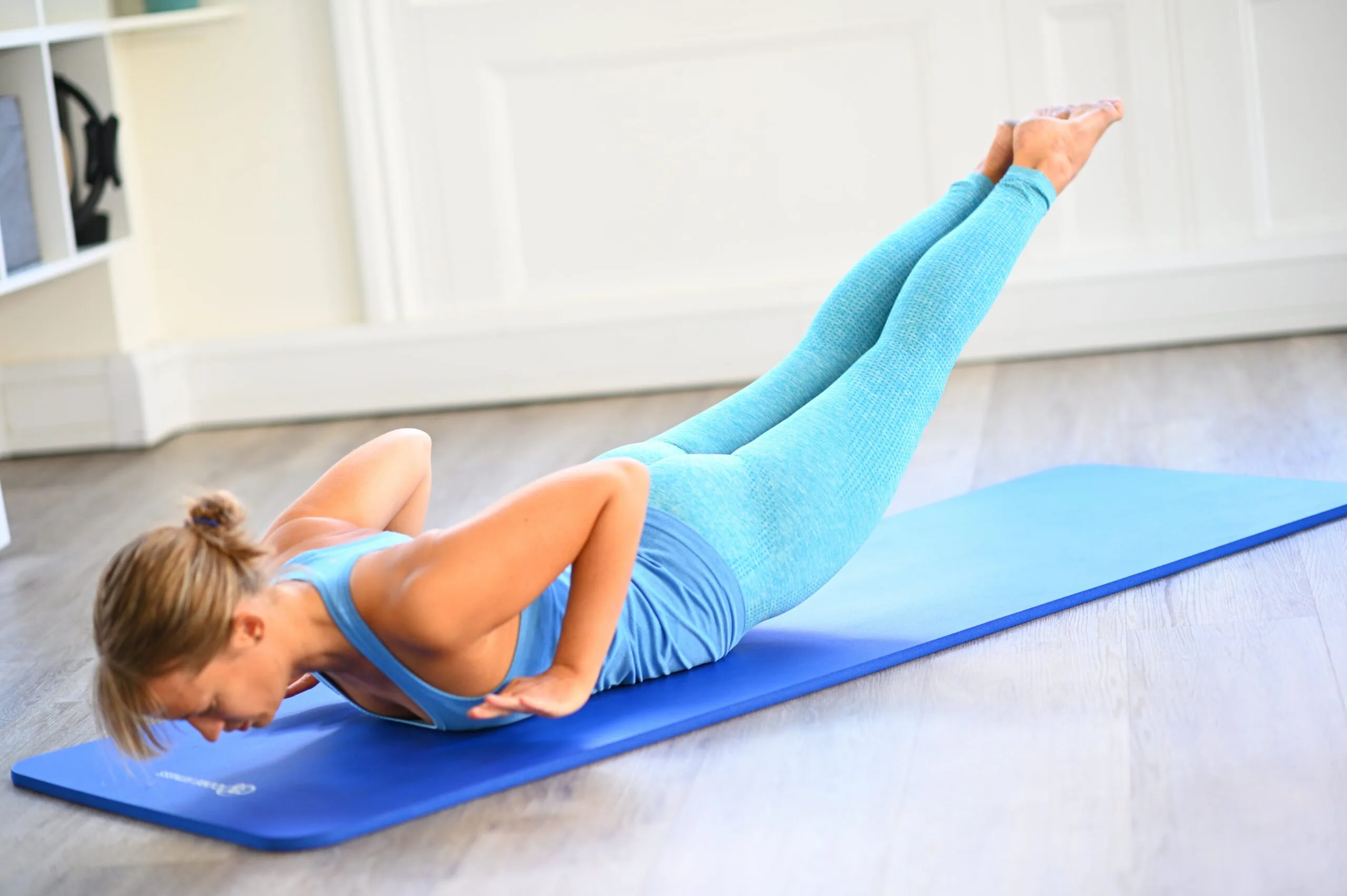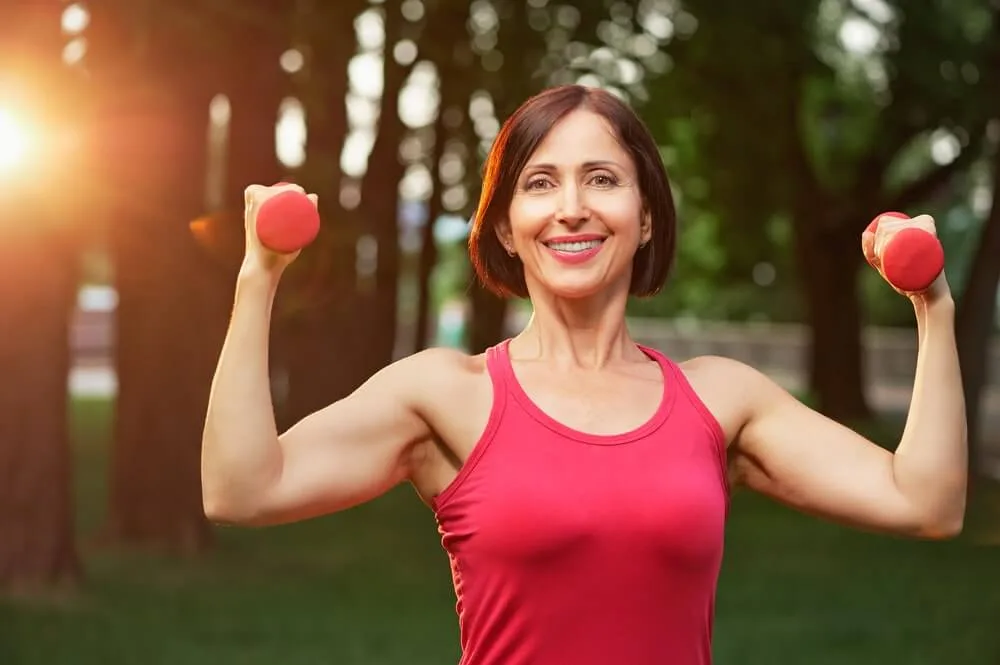Pilates on the mat
Author: Susie Martin is a chartered physiotherapist and clinical Pilates instructor as well as clinical lead at Complete Pilates.
Are you wondering where to start with Pilates on the mat? Look no further than this article where we introduce you to ten of the best Pilates mat exercises.
Joseph Pilates, the creator of Pilates, found time to develop his exercise methods whilst confined as a prisoner of War in the UK. His methods were perfect for exercising without equipment and limited space. His original system of exercises was called Contrology and only named for Pilates after his death.
There were 34 exercises in the method but we don’t recommend you start trying to master all thirty-four at once! Instead, we will start with a few to give you a well-rounded routine.
We present here ten exercises of varying difficulty so that you can learn safely but still feel the benefits of Pilates straight away.
These Pilates mat exercises may be simple to understand, but that does not mean they are easy to do! You can get started on these exercises at home but it’s always a good idea to attend classes with an instructor so that you can learn how to get the most out of the exercises.
If you can, attending a few 1:1 sessions with a Pilates instructor will make your Pilates practice even more effective and the Pilates mat exercises can be tailored specifically to your needs.
Pilates instructors are experts in finding those little tweaks to your form that can mean the difference between making progress quickly or expending a lot of effort for little return.
If you have any injuries please consult with a medical professional before beginning these exercises and you may prefer to start with our beginner Pilates on the mat.
Our top 10 Pilates Mat Exercises
Pilates on the mat: Femur Arcs
Femur arcs is a great Pilates mat exercise in which to learn good technique for the more advanced abdominal exercises. The legs act as a load for the abdominals to work with but since the legs are bent, they carry less load than when they are straightened out into a full ‘lever’.
The key principle of this exercise is to maintain a good breathing pattern, but also to be able to control the position of the lower back and pelvis. As the leg moves up and down, there should be minimal movement of the lower back and pelvis.
Finally, being able to work the abdominals in the right way is important – the aim is to be able to maintain the abdominals gently drawing in, whilst maintaining relaxed breathing. The abdominals should not bulge up into a ‘dome’, nor should you be holding your breath to do the exercise.
Pilates on the mat: Dead Bugs
The Dead Bug exercise is designed to challenge your abdominals. There are lots of variations of the Dead Bug exercise throughout the various schools of Pilates. In its simplest form – it looks a lot like Femur Arcs but with one leg staying on the floor throughout. This version is great for rehabilitation following injury or illness.
For more of a challenge we demonstrate here the ‘slow’ Dead Bug using arms and legs as load for the abdominals. Can you master moving the opposite arm and leg at the same time? Can you switch easily between moving opposite sides and same sides? This is a great challenge for co-ordination.
You can increase the workload of this exercise by using weights in your hands, to get your abdominals really working,
Pilates on the mat: the Pilates roll up
The Pilates Roll Up is a classic Pilates mat exercise which helps us to mobilise, articulate and elongate the spine. With modern day sedentary lifestyles, the spine does not get a chance to move in a variety of ways. The Pilates roll up is a great way to move the spine.
Not only that but the roll up teaches us to use the abdominals but in a way that does not restrict movement. Often we think about having a strong core as meaning having rigidity in the abdominals, but that isn’t necessarily what having a strong core entails.
Do you pride yourself on being strong? You may well be – but can you do a roll up? Try it and see! This may challenge your thoughts on core strength.
Pilates on the mat: Single Leg Stretch
The single leg stretch is a classic Pilates mat exercise which bears more resemblance to the types of abdominal exercise that you may be accustomed to seeing in the gym. In our video, we demonstrate how to curl your body in the optimal way to make this exercise seem effortless. You may not believe it, but this exercise done well can be done with a sense of ease even though you can feel your abdominals are working hard.
Pilates on the mat: The Hundred
The Hundreds is probably the exercise that many people think of when they think of Pilates on the mat.
This exercise is all about learning how to breathe whilst the abdominal muscles are active, with the challenging load of both legs held out at the same time.
This Pilates mat exercise builds endurance through a static activation of the abdominal muscles and encourages focus on maintaining a consistent breathing pattern which is important to ensure you are doing the exercise effectively.
Pilates on the mat: Prone Press
So far, all the Pilates mat exercises have taken place lying on your back. In this exercise we start lying on your front. This exercise is a great variation of the swan dive in Pilates and the cobra in yoga. Whilst it’s not such a big movement this targets you in the part of the back where most of us are more stiff – the upper back -and is less harsh on the lower back. This variation also encourages you to use your arms sparingly which means you have to use your back muscles more. These muscles are less active when we sit, and need targeting to undo the effects of sedentary lifestyles.
Pilates on the mat: single leg kick
The Single Leg Kick is a one of Joseph Pilates’ original exercises and great one to counteract our sedentary postures. The position on the elbows brings us out of the slumped sitting position to open out the chest and extend the back. This Pilates mat exercise strengthens the shoulder muscles through maintaining a strong position supported on the forearms. Finally, the leg action gets you working the back of the leg and bottom muscles which are inactive through most of our daily activities.
Pilates on the mat: Swimming
This Pilates mat exercise works on the muscles on the back of the body – the scapula muscles that help to stabilise the shoulder blades, the back extensors muscles, buttocks and back of thigh. Sue to our habitual sitting postures and sedentary lifestyles, these muscles are commonly not getting as much of a workout as they might otherwise.
Whilst working our back body muscles, we simultaneously need to find length through the abdominals and hip flexors, as well as a sense of elongating the spine, so it can be a great flexibility exercise as well.
Pilates on the mat: Leg Pull Front
The leg pull Pilates mat exercises are full body integration exercises that work arms, legs and core all together. Leg pull front works the chest, abdominals, hip flexors and quads.
Pilates on the mat: Leg Pull Back
Leg pull back is a full body exercise with a focus on the back of the shoulder, back muscles, gluteals and hamstring muscles.
Pilates on the mat: Rolling like a Ball
Whilst this exercise might look like a bit of fun for the kids, it’s actually one of Joseph Pilates original exercises and does require some skill.
When this exercise is done well, you can feel your lower abdominals working. Another clue that you are getting it right is being able to stop your feet touching the ground when you get to the top of the exercise. The key to this exercise, as you will see from the video, is being able to try and maintain as much of a ‘C’ Curve as you can throughout the spine, which for some of us is tricky through the lower back.
If you have any back pain – consult a professional and get some advice before attempting this exercise. If you are pain free you can get further tips from the video and have fun with it!
Want to learn more about these Pilates exercises and discover more exercises with the original Pilates equipment? To discover a whole new world of movement, get started and book a 1:1 session with us today!
Education is key:
These blogs are designed to give information to everyone, however, it is important to remember that everyone is different! If you have not seen one of our therapists and have any questions about injuries, what you have read or whether this may be useful to you, please just ask. We are more than happy to help anyone and point you in the right direction. Our biggest belief is that education is key. The more you understand about your injury, illness and movement, the more you are likely to improve.




